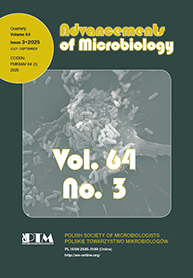Abstract: Irritable bowel syndrome (IBS) is a chronic gastrointestinal disorder with an increasing global prevalence. The International Classification of Diseases (ICD) system typically categorizes IBS into four subtypes based on symptomatology. The objective of this review is to provide a concise synthesis of the most current information regarding IBS, encompassing widely accepted diagnostic criteria, etiology, epidemiological data and the significance of gut microbiota (GM) in pathogenesis of this disorder. Additionally, it will explore future perspectives. Recent studies have demonstrated that the GM in healthy individuals primarily consists of four main bacterial phyla: Firmicutes spp., Bacteroidetes spp., Actinobacteria spp., and Proteobacteria spp. Dysbiosis or an imbalance in these bacteria may be a contributing factor to the IBS development. It is imperative to acknowledge the multifaceted role of the GM in several essential biological processes, including: immunomodulation, intestinal barrier integrity, gut microbiota-gut-brain axis (GBA) or nutrient absorption. The composition of GM is subject to variation depending on the IBS subtype. Many therapeutic strategies have been devised for the treatment of patients with IBS, comprising antibiotics, probiotics, prebiotics, synbiotics and fecal microbiota transplantation (FMT). Although FMT has shown promise, clinical trials outcomes remain still inconsistent. Dietary interventions and psychological support are also vital components of IBS management.
Despite the advances in understanding the GM-IBS relationship, there is still a lack of knowledge regarding specific microbial markers for each IBS subtype. Consequently, a definitive microbiota pattern has yet to be delineated. However, emerging evidence underscores the microbiome’s role in IBS pathophysiology.
Browsing tag: IBS
Streszczenie: Zespół przerostu bakteryjnego jelita cienkiego (SIBO) jest heterogennym zespołem charakteryzującym się wzrostem liczby i/lub obecnością nietypowych bakterii w jelicie cienkim. Na złożoną etiologię SIBO składają się zaburzenia ochronnych mechanizmów przeciwbakteryjnych jak zmniejszona kwaśność soku żołądkowego, zewnątrzwydzielnicza niewydolność trzustki, zespoły niedoboru odporności oraz nieprawidłowości anatomiczne jak niedrożność jelita cienkiego, uchyłki, przetoki, chirurgiczna ślepa pętla, wcześniejsze resekcje krętniczo-kątnicze oraz zaburzenia ruchliwości. Objawy kliniczne SIBO mogą być niespecyficzne. Najczęściej występuje niestrawność, biegunka, wzdęcia, dyskomfort w jamie brzusznej. Czasem SIBO może powodować zaburzenia wchłaniania, poważne
niedożywienie i zespoły niedoborów. Złotym standardem w diagnozowaniu SIBO jest nadal badanie mikrobiologiczne aspiratów jelita czczego. Do diagnostyki SIBO najczęściej stosuje się nieinwazyjne wodorowe testy oddechowe. Terapia SIBO musi być złożona i powinna obejmować leczenie choroby podstawowej, wsparcie żywieniowe i cykliczne stosowanie antybiotyków selektywnych dla przewodu pokarmowego. Rokowanie jest zwykle poważne, determinowane głównie przez chorobę podstawową, która doprowadziła do SIBO.
1. Wprowadzenie. 2. Ekosystem układu pokarmowego. 3. Patogeneza SIBO. 4. Patomechanizm. 5. Objawy. 6. Diagnostyka. 7. Leczenie. 8. Dieta w SIBO. 9. Podsumowanie
Abstract: Small intestinal bacterial overgrowth syndrome (SIBO) is a heterogeneous syndrome characterized by an increase in the number and/or presence of atypical bacteria in the small intestine. Aetiology of SIBO is usually complex, associated with disorders of protective antibacterial mechanisms such as achlorhydria, pancreatic exocrine insufficiency, immunodeficiency syndromes and anatomical abnormalities such as small intestinal obstruction, diverticula, fistulae, surgical blind loop, previous ileo-caecal resections and motility disorders. Clinical signs of SIBO may be non-specific. Most often there is dyspepsia, diarrhoea, bloating and abdominal discomfort. SIBO can
sometimes lead to malebsorption, severe malenutrition and/or other syndromes associated with nutritional deficiency. The gold standard for diagnosing SIBO is still microbial investigation of jejunal aspirates. Non-invasive hydrogen breath tests are most commonly used for diagnosis of SIBO. Therapy for SIBO must be complex. It should include treatment of the underlying disease, nutritional support and cyclical gastro-intestinal selective antibiotics. Prognosis is usually serious, determined mostly by the underlying disease that led to SIBO.
1. Introduction. 2. Digestive tract ecosystem. 3. Pathogenesis of SIBO. 4. Pathomechanism. 5. Symptoms. 6. Diagnostics. 7. Treatment. 8. Diet in SIBO. 9. Summary

